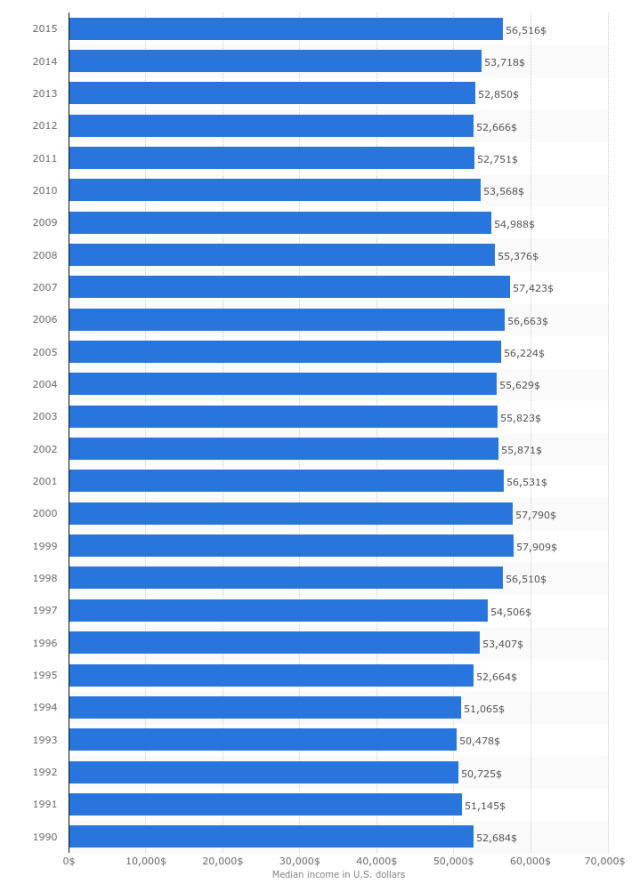A common complaint (not completely without merit, mind you) on car blogs these days, most often leveled at “Ze Germans” (Audi, BMW, Benz) is that prices have hockey sticked disproportionate to inflation, particularly at the “low end”. The discussions that follow usually rat hole into debates over relative currency values, globalization, consumerism, et al but I think the actual root cause here is something simpler. The trend I’ve observed isn’t even really unique to the big 3 Germans, but I’ll stick with those since they work really well as examples.
Typically these discussions start off comparing pricing of the C class, 3 series and A4 from “back in the day” (let’s call it 2002), to today. So let’s do that:
| Manufacturer | Model | 2002 base MSRP (2017 inflation adjusted) | Dimensions |
|---|---|---|---|
| Audi | A4 1.8LT I4, 170HP, FWD | 24,900 (33,717) | 179″L x 70″W x 56″H |
| BMW | 325i, 2.5L I6, 184HP, RWD | 27,100 (36,696) | 176″L x 69″W x 56″H |
| Mercedes Benz | C230, 2.3L, V6, 190HP, RWD | 24,950 (33,784) | 171″L x 68″W x 55″H |
OK, now bear with me. Before we continue down the usual path, let’s take an alternate view:
| Manufacturer | Model | 2002 base MSRP | Dimensions |
|---|---|---|---|
| Audi | A6 3.0L V6, 220HP, FWD | 35,400 (47,935) | 192″L x 76″W x 57″H |
| BMW | 525i, 2.5L I6, 184HP, RWD | 35,950 (48,679) | 188″L x 71″W x 57″H |
| Mercedes Benz | E320, 3.2L, V6, 221HP, RWD | 49,250 (66,689) | 189″L x 71″W x 57″H |
Now, those are the “midsize” pseudo luxury sedans of yesteryear. With those in mind, let’s have a look at what’s happened to the “entry level” 15 years on:
| Manufacturer | Model | 2017 base MSRP | Dimensions |
|---|---|---|---|
| Audi | A4 2.0LT I4, 190HP, FWD | 34,900 | 186″L x 73″W x 56″H |
| BMW | 320i, 2.0LT I4, 180HP, RWD | 33,450 | 182″L x 71″W x 56″H |
| Mercedes Benz | C300, 2.0L, V4, 241HP, RWD | 39,500 | 185″L x 71″W x 57″H |
Note the adjusted for inflation 2002 pricing reflects an average inflationary gain of about 2% per year or roughly 50% total in the 15 year period. Let’s shift gears (no pun) and have a look at a different kind of chart:

My oh my. What have we there? Yep. In 2002, median income was 55,871. Adjusted for inflation, you’d need to be making 75,655 in 2017 to enjoy a similar lifestyle. Guess what? As of 2017, median US income is… 55,575.
No. That’s not a typo. Median income has gone down. Now let’s go back to the car data. Notice a few things:
- “Entry level” has moved up a notch – not reflected here is the fact that C class, 3 series and A4 are no longer “entry level”. Those honors now belong to CLA class, 2 series and A3
- These things keep getting bigger. This is by demand, by the way. If you notice, the current C/3/A4 aren’t quite as massive as the old E/5/A6, but they’re getting awefully close
- HP, performance and tech are way up
- Build quality, is arguably down, even though safety is in fact up as is economy. This is a direct reflection of the fact that while regulations are strict (at least for now), people don’t keep cars anymore and instead apply the cell phone model and flip them via lease every 2-3 years. So you build a gadget filled, high performing, surprisingly economical, extremely safe transit pod, but you cut corners on fit and finish since it isn’t expected to stick around too long
- But the main point here is… These models have paced inflation very well
So what is the conclusion? The conclusion is that the C class, 3 series and A4 are actually extremely impressive values. You’re now half way to what the higher tier models used to give you in terms of comfort, with dramatically improved technology, fuel economy and performance, but in exchange for a hit on overall fit and finish. That said, the pricing is in line with what it should be.
What is not in line, is actual incomes. So the cost of these cars have not outpaced inflation, but rather inflation has massively outpaced salary growth. That is the real issue. So how are the car manufacturers able to sell at essentially the same price point to people who get poorer every year? Well, that’s where the leasing model comes in, even as far as subsidizing the depreciation charge in some cases. So sure, no one ever owns anything. But at this point, most people don’t care. As long as the payment still “fits” in the budget. So basically the car manufacturers found a pretty clever way to sell essentially the same car, evolved a bit, at roughly the same price, to people who make less money, by using a financial instrument that can still (just) fit in their budget. Of course the challenge is there is nowhere to go from here really. And, in my opinion, that is the reason for introducing the down market 2/CLA/A3, sized like the old original platforms which is a size class many still love. Folks who can afford (just) to lease a 3/C/A4 today can probably buy one of those, and people slipping out of even the 3/C/A4 lease space today can at least lease one of those.
